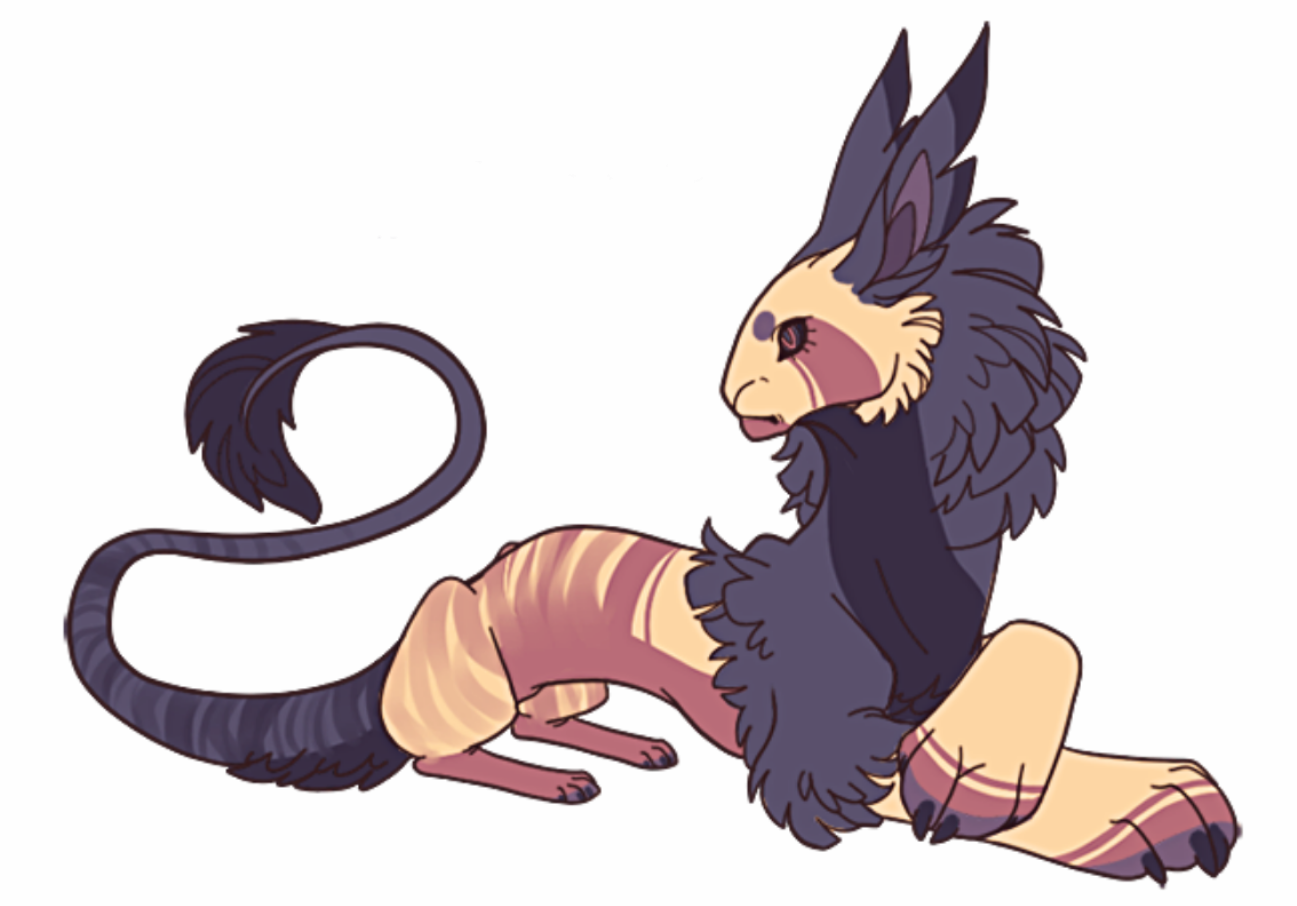Demi-Sphinxes
"Hmm, you know? That was pretty clever word play. I'll let you go." The demi-sphinx retracts its claws from the orc scout's shoulder. "Better get running though..."The demi-sphinx is a predatory creature created by the mages at the Tower of Nelassko in southern Turla Pann. Nelassko's mage cloister had sought to breed a species of domesticated sphinxes by performing blood transfusions on native big cat species with sphinx blood. Recovered records show these experiments began around approximately 1018 EM and was successful for three generations of demi-sphinxes until their eventual escape. Being highly intelligent and resentful creatures, the escaped demi-sphinxes hunted and killed each member of the Nelassko cloister. The newly freed species of demi-sphinxes escaped the confines of their birthplace and spread into the nearby mountains, quickly replacing the native cat species either through killing or interbreeding. Inheriting some of psychic abilities of sphinxes, Demi-sphinxes are capable of human speech, telepathy, and minor clairvoyance. Using these abilities demi-sphinxes hunt and torment their prey by calling out their deepest fears or final prayers. Though malicious in their tactics, some survivors have reported being set free if they could entertain the demi-sphinx with sufficiently clever puns or word play.
Trembling, the orc asks, "But why? Did you not like it?"
"I did, but my partner is hard of hearing," The demi-sphinx smiles as predatory laughter is heard from the nearby brush.
Basic Information
Anatomy
As offshoots of their feline ancestors, demi-sphinxes are quadrupedal creatures with long non-prehensile tails. Adult demi-sphinxes have bodies between 1.2 to 2.4 meters long from head to tail. Their necks are covered in thick, long fur forming a mane that starts just behind their large pointed ears. Their heads are large to accommodate their sharp teeth and powerful jaws.
Demi-Sphinx skeletal frames are front heavy. Their forelegs are muscular and are used for mauling and tearing. The hindlegs are more lithe than the forelegs and are predominately used for leaping.
Ecology and Habitats
Though the demi-sphinx is not a naturally occurring species, they have been found to thrive in the cold northern mountains. Their thick coats and strong legs allow them to easily survive the rocky terrains year round. Despite this, demi-sphinxes are capable of surviving more temperate climates such as the Orcish Prairies and northern Miras.
Dietary Needs and Habits
By the design of their creators, demi-sphinxes rarely need to eat; despite this however, they often hunt for pleasure. Demi-Sphinxes are strictly carnivorous and will eat off any any animal species or person they can find. Demi-Sphinxes seem to find more enjoyment from meat that has recently been made to suffer emotional torture.
Additional Information
Perception and Sensory Capabilities
Demi-Sphinx eyes are large and well adapted to darkness and dim-lighting. Coupled with heightened visual senses, demi-sphinxes have large ears that can swivel on their head to listen for prey and would be rivals.
On top of their physical senses, demi-sphinxes are able to tap into psychic senses to read minds and predict movements. When hunting intelligent species, a demi-sphinx can taunt the hunted prey with their own thoughts, and when the prey attempts to hide out of sight the demi-sphinx can use these telepathic abilities to locate their hiding space.
Genetic Ancestor(s)
Scientific Name
Pathera Sphinxa
Origin/Ancestry
Experimentations on Big Cats
Lifespan
20 - 30 years
Conservation Status
Invasive



Comments
Author's Notes
Monster of the Week, Jan 22, 2021. Discord Discussion.